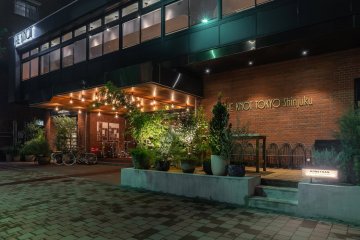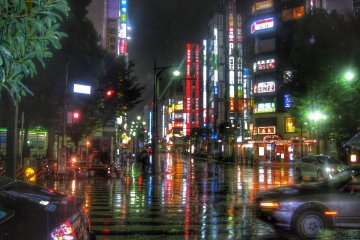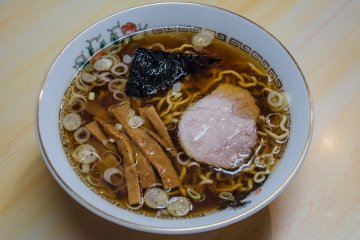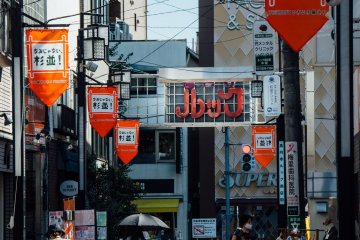Hébergements
Chris White
Déroutant ou charmant ? Ikebukuro est probablement mon quartier préféré de la capitale. Bien souvent négligé, il figure en effet rarement en haut des listes de « must-see » des touristes. Mais avec son charme typique, il mérite pourtant une visite. Le quartier abrite la deuxième station la plus fréquentée du Japon (et même du monde) avec plus de 1 million de passagers par jour transitant par ses portes. Pourtant, malgré l'agitation du lieu, Ikebukuro conserve une ambiance accueillante, plus décontractée que chez ses voisins tokyoïtes Shinjuku et Shibuya. La station divise le quartier d'est en ouest, l'ouest hébergeant plutôt des restaurants, des universités ou des quartiers étudiants, et l'est abritant des commerces plus en vogue et des attractions touristiques. Fait intéressant, les deux grands magasins se situant de chaque côté de la station sont tenus par des demi-frères rivaux. Côté ouest se trouve le grand magasin Tobu, et à l'est, le grand magasin Seibu. Seibu était autrefois le plus grand magasin au Japon, jusqu'à ce que Tobu lui vole la couronne. La Sunshine City est un bon point de départ pour commencer la visite du quartier. Située côté est de la gare, elle fut construite sur le site de l'ancienne prison de Sugamo qui abritait après la Seconde Guerre mondiale des criminels de guerre japonais de haut rang. Sept d'entre eux, dont l'ancien Premier ministre Hideki Tojo, ont même été exécutés ici. Les lieux sont heureusement aujourd’hui bien plus accueillants. Ouvert en 1978, l'attraction phare du complexe est ici la plate-forme d'observation située au 60ème étage du bâtiment Sunshine 60. Bien que ce dernier ne se situe pas à proximité de lieux emblématiques, cette plate-forme d'observation offre une vue fantastique sur les environs. Elle est desservie par l'un des ascenseurs les plus rapides au monde, donc il n'y a pas de longues files d'attente pour atteindre le sommet ! Le complexe Sunshine City abrite également des boutiques, des restaurants, un hôtel, un aquarium, un musée, un planétarium et un parc à thème pour les enfants. De quoi vous tenir occupé pour toute la journée ! Tokyu Hands est l’endroit idéal pour trouver des souvenirs, des cadeaux originaux et des objets du quotidien comme un vélo d'appartement et des ustensiles de cuisine. Il y a également un showroom Toyota de 6 étages pour les passionnés de voiture, ou encore le Nekobukuro, une sorte de zoo permettant de caresser des chats. S'il vous reste un peu de temps pour visiter les lieux, partons explorer le reste du quartier. L'un de mes endroits préférés pour passer le temps à Ikebukuro est Junkudo, une énorme librairie de 10 étages avec un peu de tout, et même des livres en anglais à l'étage supérieur. Il y a des chaises à chaque étage, de sorte que vous pouvez prendre votre temps pour décider d'acheter ou non un livre. Ikebukuro a acquis la réputation d'être le nouveau «Akihabara pour filles» depuis l’apparition de l’Otome Road, située au nord-ouest de la Sunshine City. Otome Road se traduit littéralement par "Maiden Road" ("la route des jeunes filles"), un surnom donné en raison du grand nombre de magasins de manga et d’animé destinés aux femmes que l’on trouve ici. Ces derniers ajoutés aux magasins tels que Bic Camera, un magasin d'électronique situé à proximité de la sortie est de la gare, ou encore Lumines, une grande boutique de mode pour femmes à l'ouest, font de Ikebukuro le paradis du shopping. Pour les visiteurs souhaitant des sorties plus culturelles, pourquoi ne pas envisager une visite du Metropolitan Theater de Tokyo ? Rouvert en 2012 après des rénovations pour promouvoir l'art et la culture japonaise, ce bâtiment moderne contient, entre autres, une salle de concert, des théâtres, des galeries d'art et des restaurants. Mais il est peut-être mieux connu pour abriter le plus long escalator du monde ! Egalement, si vous aimez les ramen, Ikebukuro est parfois appelé le Ramen Warzone. Il y a en effet des restaurants rivaux disséminés dans tout le quartier, vous ne devriez donc pas avoir de mal à en trouver un à votre goût. Vous n’êtes pas un amateur de ramen ? Pas de problème, il y a ici beaucoup d'alternatives : restaurants de gyoza, restaurants de gastronomie étrangère et de grandes rayons de nourriture sous les grands magasins de la gare. Avec tout cela, pourquoi ne pas donner une chance au quartier d'Ikebukuro ?
Tokyo
2.1k







/139.65062762761,35.706119490141,9/397x132?access_token=pk.eyJ1IjoiamFwYW50cmF2ZWxtYXBzIiwiYSI6ImNqbXBtOXYxbDB5Z3ozbHFrazJuYWMwOGYifQ.v15fy_mcFWtgopmz8PhwqA)







